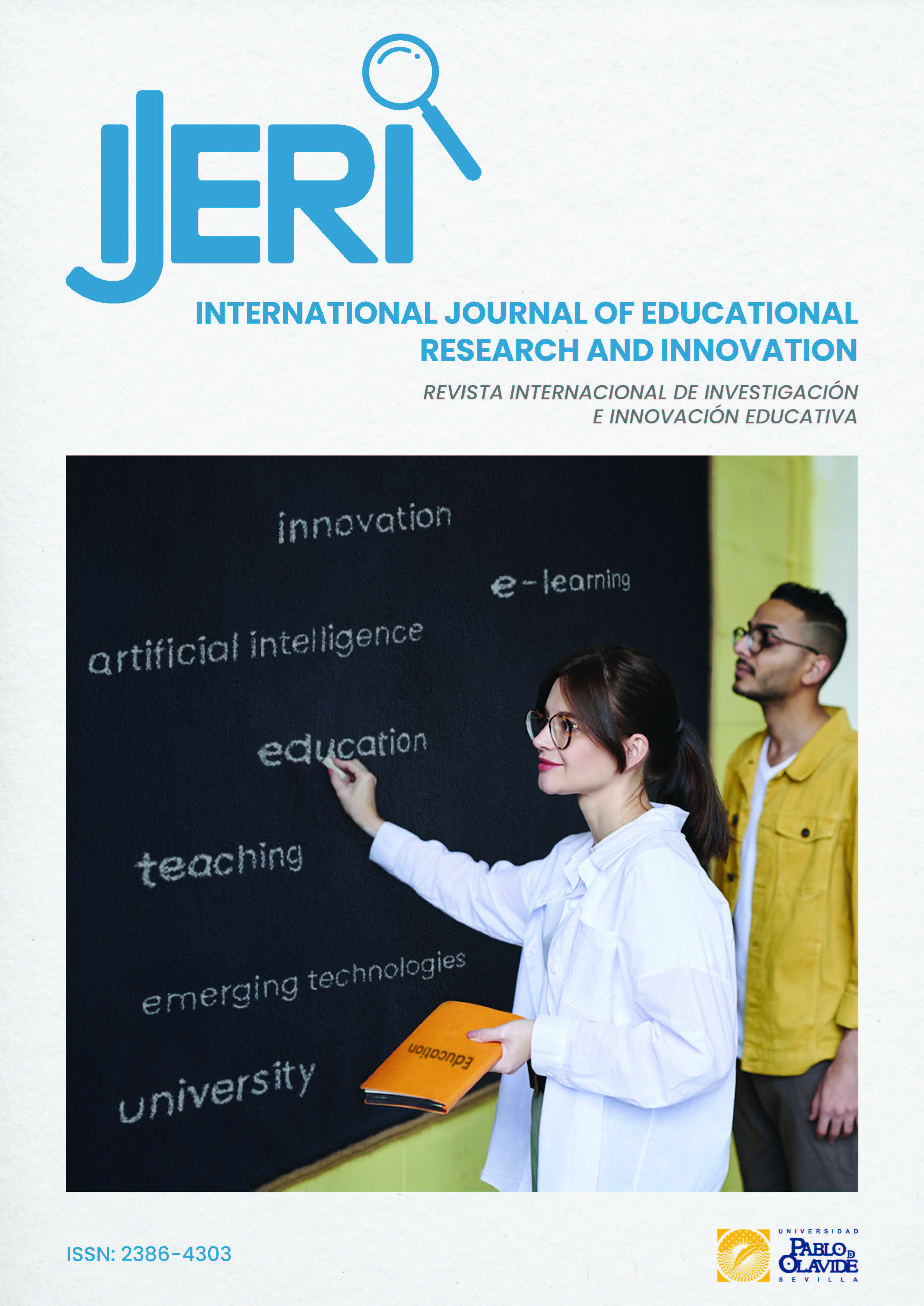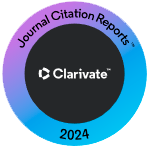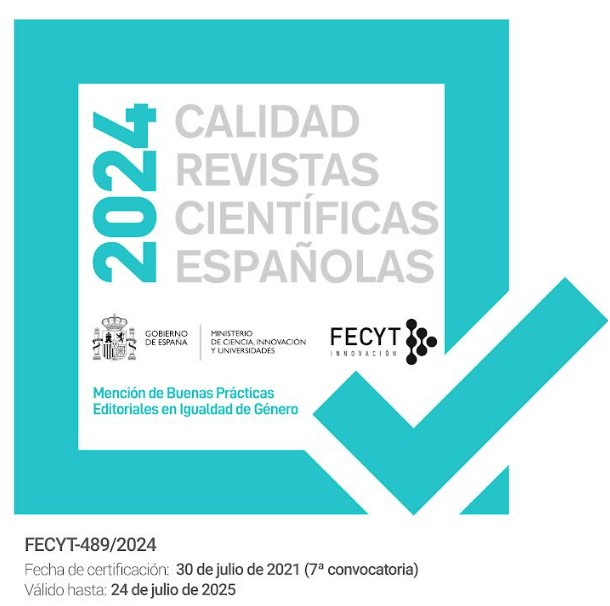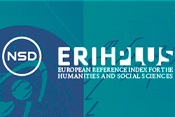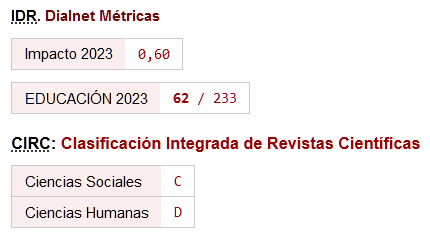Robotics in university teacher training
A comparative analysis of perceptions between Spain and Portugal
DOI:
https://doi.org/10.46661/ijeri.11021Keywords:
Higher Education, robotics, STEAM, students’ perceptionsAbstract
Educational robotics has gained relevance as a tool to improve teaching, especially in disciplines related to Science, Technology, Engineering, Arts and Mathematics. This study compares the perceptions of university students in Spain and Portugal about its use, with the aim of identifying the impact of robotics on their teacher training. A quantitative and descriptive approach was used, using a questionnaire with 42 items and applied to 193 students from both nations. Perceptions about knowledge of robotics, interaction with it and its impact on motivation and learning were analysed. The data were processed with specialized computer software. Students from both countries showed a positive attitude towards educational robotics. The average scores were high in areas such as motivation and willingness to implement robotics in their teaching practices, although low knowledge was identified in specific tools such as Arduino and Scratch. The results reflect that educational robotics is seen as an effective tool to foster critical skills, such as critical thinking and self-learning. However, training in specific technologies needs to be improved. Educational robotics is perceived as beneficial in both Spain and Portugal, especially in terms of motivation and pedagogical methodology. However, greater familiarity with technological tools is required to maximize its educational impact.
Downloads
References
Adams, S., Cummins, M.; Davis, A., Freeman, A., Hall, C., Ananthanarayanan, V. (2017). NMC Horizon Report: 2017 Higher Education Edition. The New Media Consortium.
Alimisis, D. (Ed.). (2013). Robotics in Education: Research and Practices for Robotics in STEM Education. Springer.
Athanasiou L., Mikropoulos T.A. & Mavridis D. (2019). Robotics Interventions for Improving Educational Outcomes - A Meta-analysis. In: Tsitouridou M., A. Diniz J. & Mikropoulos T. (eds). Technology and Innovation in Learning, Teaching and Education. TECH-EDU 2018. Communications in Computer and Information Science, 993, (pp. 91-102). Springer, Cham. https://doi.org/10.1007/978-3-030-20954-4_7
Benitti, F. B. V. (2012). Exploring the educational potential of robotics in schools: A systematic review. Computers & Education, 58(3), 978-988. https://doi.org/10.1016/j.compedu.2011.10.006
Bers, M. U. (2008). Blocks to robots: Learning with technology in the early childhood classroom. Teachers College Press.
Botes, R. & Smit, I. (2019). Robotics: From Zero to Hero in Six Week. In: Suleman, H., & Eds, S. G. ICT Education. In Encyclopedia of the Sciences of Learning, (pp. 32-46). Springer. https://doi.org/10.1007/978-3-030-05813-5_3
Bravo, F.A. & Forero A. (2012). La robótica como un recurso para facilitar el aprendizaje y desarrollo de competencias generales. Revista Teoría de la Educación. Educación y Cultura en la Sociedad de la Información, 13(2), 120-136. https://doi.org/10.14201/eks.9002
Cook, T.D., Campbell, D.T. (1986). The causal assumptions of quasi-experimental practice. Synthese, 68, 141-180. https://doi.org/10.1007/BF00413970
Chavarría, M. y Saldaño-Mella, A. (2010). La robótica educativa como una innovativa interfaz educativa entre el alumno y una situación-problema. Didasc@lia: Didáctica y Educación, 1(2), 1-12. https://revistas.ult.edu.cu/index.php/didascalia/article/view/11
Daniel, W. W., & Cross, C. L. (2018). Biostatistics: A Foundation for Analysis in the Health Sciences. Wiley.
DeCarlo, L. T. (1997). On the meaning and use of kurtosis. Psychological Methods, 2(3), 292-307. https://doi.org/10.1037/1082-989X.2.3.292
Delgado-Vázquez, A., Vázquez-Cano, E. Belando-Montoro, M.B., López-Meneses, E. (2019). Bibliometric analysis of the impact of educational research on functional diversity and digital competence: Web of Science and Scopus. Aula Abierta, 48, 147–156. http://dx.doi.org/10.17811/rifie.48.2.2019.147-156
Fernández-Batanero, J.M., Cabero, J., López-Meneses, E. (2019). Knowledge and degree of training of primary education teachers in relation to ICT taught to students with disabilities. British Journal of Educational Technology, 50, 1961-1978. http://dx.doi.org/10.1111/bjet.12675
Freedman, D., Pisani, R., & Purves, R. (2007). Statistics. W. W. Norton & Company.
García Hurtado, N. D., Castillo García, L. F. y Escobar Jiménez, A. J. (2012). Plataforma robótica educativa “ROBI”. Revista Colombiana de Tecnologías de Avanzada, 1(19), 140-144. https://revistas.unipamplona.edu.co/ojs_viceinves/index.php/RCTA/article/view/163
Gravetter, F. J., & Wallnau, L. B. (2016). Statistics for the behavioral sciences. Cengage Learning.
Hervás-Gómez, C., Ruíz, C., Román-Graván, P., & Ballesteros-Regaña, C. (2019). Diseño y validación del cuestionario sobre aceptación y uso de la robótica educativa (CAURE). En J. Gómez-Galán, M. P. Cáceres-Reche, E. José Delgado y E. López-Meneses, Experiencias en innovación docente y aportes de investigación sobre la praxis universitaria, (pp. 77-90). Octaedro.
Hervás-Gómez, C., Díaz Noguera, M. D., De la Calle, A. M., & Román Graván, P. (2021). El valor de la robótica educativa en las prácticas educativas para las futuras docentes. En Innovación en la Docencia e Investigación de las Ciencias Sociales y de la Educación (pp. 1635-1665). Dykinson.
Hudson, M.-A., Baek, Y., Ching, Y., & Rice, K. (2020). Using a multifaceted robotics-based intervention to increase student interest in STEM subjects and careers. Journal for STEM Education Research, 3(3), 295-316. https://doi.org/10.1007/s41979-020-00032-0
Khushk, A.., Zhiying, L., Yi, X., & Zengtian, Z. (2023). Tecnología Innovación en la Educación STEM: Una Revisión y Análisis. IJERI: International Journal of Educational Research and Innovation, 19, 29–51. https://doi.org/10.46661/ijeri.7883
Kandlhofer, M., & Steinbauer, G. (2016). Evaluating the impact of educational robotics on students' technical- and social-skills and science related attitudes. Robotics and Autonomous Systems, 75, 679-685. https://doi.org/10.1016/j.robot.2015.09.007
Jung, S. E., & Won, E. S. (2018). Systematic review of research trends in robotics education for young children. Sustainability, 10(4), 1-24. https://doi.org/10.3390/su10040905
Kaloti-Hallak, F., Armoni, M., & Ben-Ari, M. (2015). Students’ attitudes and motivation during robotics activities. ACM International Conference Proceeding Series, 09-11-November, (pp. 102-110). https://doi.org/10.1145/2818314.2818317
Karaahmetoğlu, K., & Korkmaz, Ö. (2019). The effect of project-based arduino educational robot applications on students’ computational thinking skills and their perception of basic stem skill levels. Participatory Educational Research, 6(2), 1-14. https://doi.org/10.17275/per.19.8.6.2
Lytridis, C., Bazinas, C., Papakostas, G.A., & Kaburlasos, V. (2020). On Measuring Engagement Level During Child-Robot Interaction in Education. In: M. Merdan, W. Lepuschitz, G. Koppensteiner, R. Balogh, & D. Obdržálek, D. Robotics in Education, (pp. 3-13). Springer. https://doi.org/10.1007/978-3-030-26945-6_1
Llanos-Ruiz, D., Ausín-Villaverde, V., & Abella García, V. (2023). Percepción de alumnos y familias sobre la robótica educativa en la educación no formal. Education in the Knowledge Society (EKS), 24, e31351. https://doi.org/10.14201/eks.31351
Márquez, J., & Ruiz, J. (2014). Robótica educativa aplicada a la enseñanza básica secundaria. Didáctica, innovación y multimedia, 30, 1-12. https://raco.cat/index.php/DIM/article/view/291518
Master, A., Cheryan, S., Moscatelli, A., & Meltzoff, A.N. (2017). Programming experience promotes higher STEM motivation among first-grade girls. Journal of Experimental Child Psychology, 160, 92-106. https://doi.org/10.1016/j.jecp.2017.03.013
Micó-Amigo, E.., & Bernal, C. (2020). Investigación evaluativa de la innovación docente con simuladores en el área de Tecnología en la Enseñanza Secundaria Obligatoria. IJERI: International Journal of Educational Research and Innovation, 14, 134-146. https://doi.org/10.46661/ijeri.4855
Milašinčić, A., Anđelić, B., Pushkar, L. & Sović, A. (2020). Milašinčić, A., Anđelić, B., Pushkar, L., Sović Kržić, A. (2020). Using Robots as an Educational Tool in Native Language Lesson. In: M. Merdan, W. Lepuschitz, G. Koppensteiner, R. Balogh, D. Obdržálek (eds), Robotics in Education. RiE 2019. Advances in Intelligent Systems and Computing, vol 1023. Springer, Cham. https://doi.org/10.1007/978-3-030-26945-6_26
Morales-Pérez, G., Román-Graván, P., Valderrama-Hernández, R., y Corujo- Vélez, C. (2021). La robótica educativa como herramienta de motivación para el aprendizaje de lengua extranjera: El uso de robots para el aprendizaje en materia de lengua inglesa en educación primaria. En R. M’Rabet Temsamani y C. Hervás-Gómez, Innovación en la docencia e investigación de las ciencias sociales y de la educación, (pp. 1777-1765). Dykinson.
Román-Graván, P., Hervás-Gómez, C., y Guisado-Lizar, J. L. (2017). Experiencia de innovación educativa con robótica en la Facultad de Ciencias de la Educación de la Universidad de Sevilla (España). En J. Ruiz-Palmero; J. Sánchez-Rodríguez y E. Sánchez-Rivas, Innovación docente y uso de las TIC en educación, (pp. 1-16). UMA Editorial.
Román-Graván, P., Díaz-Noguera, M. D., Hervás-Gómez, C., y Morales Pérez, G. (2019). Experiencias innovadoras de uso de la robótica educativa en la formación inicial del maestro. En J. M. Fernández Batanero y López Martínez, A., Nuevos horizontes en educación, (pp. 199-226). Octaedro.
Román-Graván, P., Hervás-Gómez, C., & Ballesteros-Regaña, C. (2019). Educational robotics and computational thinking: A didactic experience of innovation at the university level. En Trends and Good Practices in Research and Teaching: A Spanish-English Collaboration, (pp. 157-171). Octaedro.
Shin, J.E.L., Levy, S.R., & London, B. (2016). Effects of role model exposure on STEM and non-STEM student engagement. Journal of Applied Social Psychology 2016, 46, 410-427. https://doi.org/10.1111/jasp.12371
Trochim, W. M., & Donnelly, J. P. (2006). The Research Methods Knowledge Base. Atomic Dog.
Valverde-Berrocoso, J.; Fernández-Sánchez, M.R.; y Garrido-Arroyo, M.C. (2015). El pensamiento computacional y las nuevas ecologías del aprendizaje. Revista de Educación a Distancia (RED), 46. https://doi.org/10.6018/red/46/3
Vázquez-Cano, E., León Urrutia, M., Parra-González, M.E. y López-Meneses, E. Analysis of Interpersonal Competences in the Use of ICT in the Spanish University Context. Sustainability 2020, 12(2), 476. https://doi.org/10.3390/su12020476
Published
How to Cite
Issue
Section
License
Copyright (c) 2024 Pedro Román-Graván, Arrifano-Tadeu Arrifano-Tadeu

This work is licensed under a Creative Commons Attribution-NonCommercial-NoDerivatives 4.0 International License.

